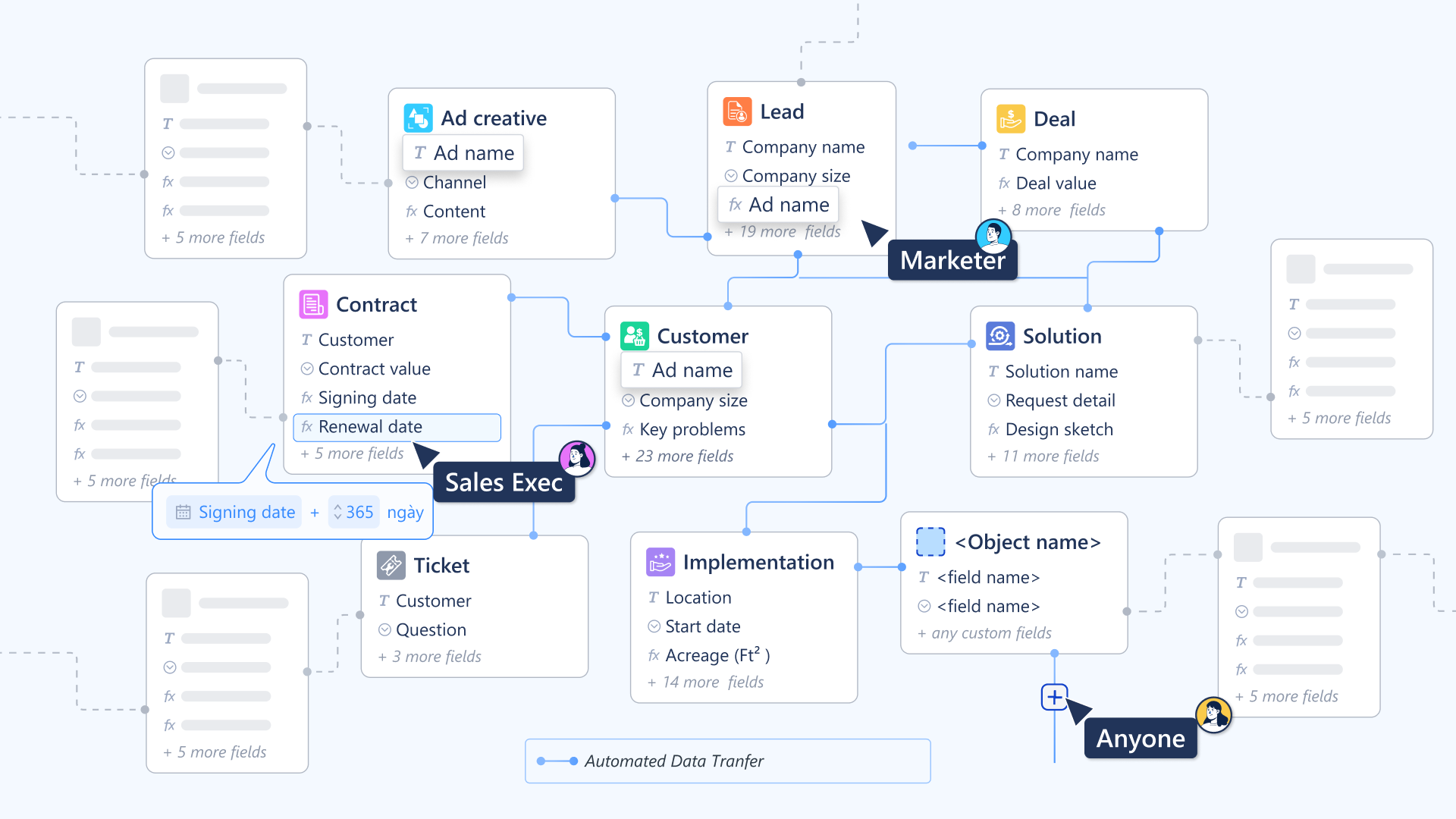Why Object Connections Matter
A business isn’t a collection of disconnected lists; it’s a web of interconnected relationships. A
Customer is linked to their Projects, which are linked to Tasks, which are linked to Invoices. Modeling these real-world connections is the key to breaking down data silos.
Four Ways to Model Relationships
Luklak provides four distinct tools for modeling relationships, each suited for a different architectural need. Understanding when to use each is the key to designing an effective and scalable system.Parent-Child Relationships
What it is: A built-in, strict hierarchy between a standard
Best for: Work breakdown structures, like a
Object and its Sub-Objects.Best for: Work breakdown structures, like a
Project containing many Tasks.Object Lookup Fields
What it is: A flexible field that allows one
Best for: Creating direct, many-to-one references, like linking a
Object to reference one or more other Objects.Best for: Creating direct, many-to-one references, like linking a
Support Ticket to a Customer.Global Connections
What it is: A centrally-managed library of reusable relationship types (e.g., “duplicates,” “is blocked by”).
Best for: Standardizing the meaning of relationships across your entire system.
Best for: Standardizing the meaning of relationships across your entire system.
Data Table Fields
What it is: An embedded “spreadsheet” within an
Best for: Modeling “contained” one-to-many data, like the line items on an
Object for managing structured lists of data.Best for: Modeling “contained” one-to-many data, like the line items on an
Invoice.